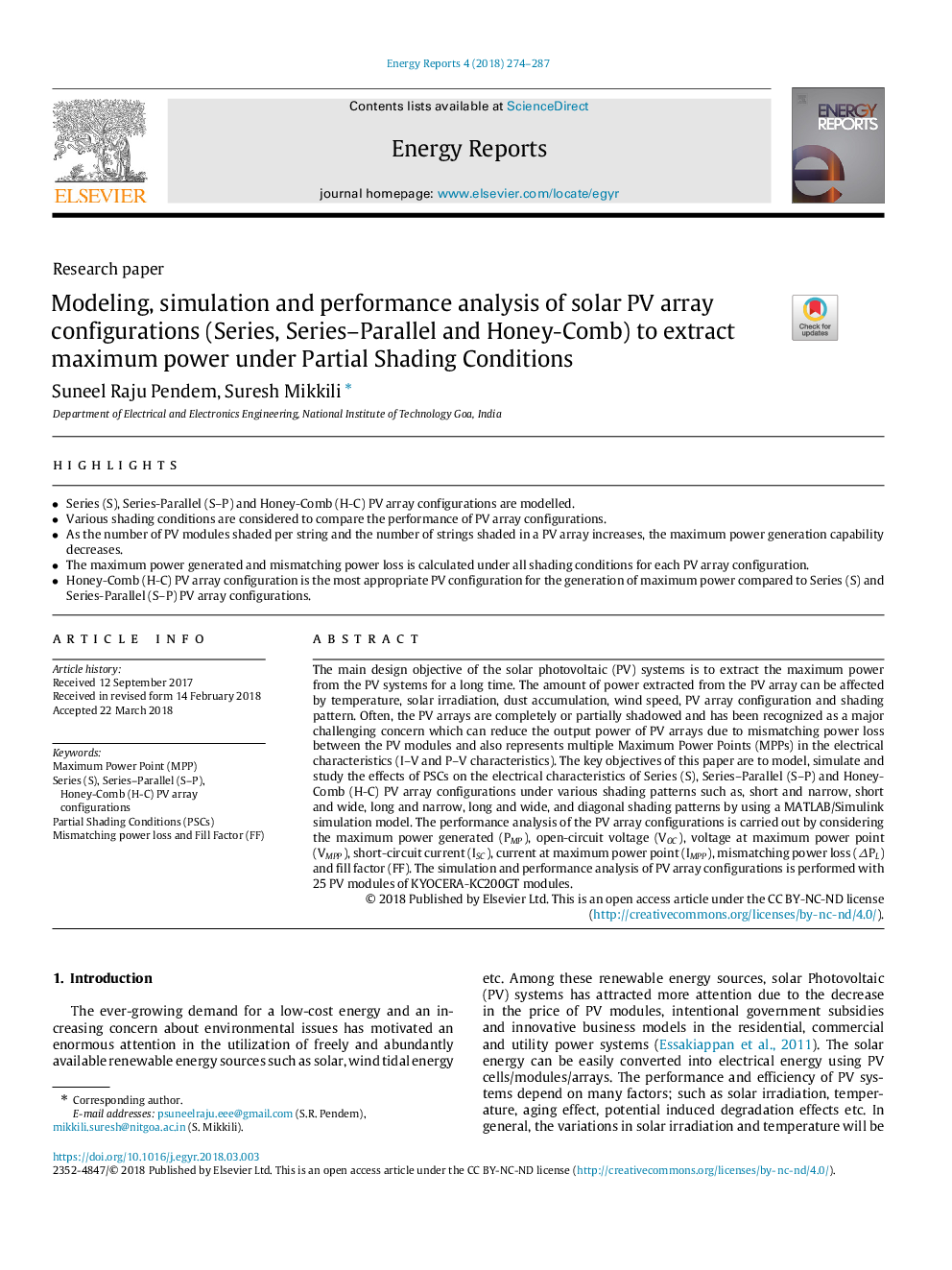| کد مقاله | کد نشریه | سال انتشار | مقاله انگلیسی | نسخه تمام متن |
|---|---|---|---|---|
| 8079574 | 1521524 | 2018 | 14 صفحه PDF | دانلود رایگان |
عنوان انگلیسی مقاله ISI
Modeling, simulation and performance analysis of solar PV array configurations (Series, Series-Parallel and Honey-Comb) to extract maximum power under Partial Shading Conditions
دانلود مقاله + سفارش ترجمه
دانلود مقاله ISI انگلیسی
رایگان برای ایرانیان
موضوعات مرتبط
مهندسی و علوم پایه
مهندسی انرژی
مهندسی انرژی و فناوری های برق
پیش نمایش صفحه اول مقاله

چکیده انگلیسی
The main design objective of the solar photovoltaic (PV) systems is to extract the maximum power from the PV systems for a long time. The amount of power extracted from the PV array can be affected by temperature, solar irradiation, dust accumulation, wind speed, PV array configuration and shading pattern. Often, the PV arrays are completely or partially shadowed and has been recognized as a major challenging concern which can reduce the output power of PV arrays due to mismatching power loss between the PV modules and also represents multiple Maximum Power Points (MPPs) in the electrical characteristics (I-V and P-V characteristics). The key objectives of this paper are to model, simulate and study the effects of PSCs on the electrical characteristics of Series (S), Series-Parallel (S-P) and Honey-Comb (H-C) PV array configurations under various shading patterns such as, short and narrow, short and wide, long and narrow, long and wide, and diagonal shading patterns by using a MATLAB/Simulink simulation model. The performance analysis of the PV array configurations is carried out by considering the maximum power generated (PMP), open-circuit voltage (VOC), voltage at maximum power point (VMPP), short-circuit current (ISC), current at maximum power point (IMPP), mismatching power loss (ÎPL) and fill factor (FF). The simulation and performance analysis of PV array configurations is performed with 25 PV modules of KYOCERA-KC200GT modules.
ناشر
Database: Elsevier - ScienceDirect (ساینس دایرکت)
Journal: Energy Reports - Volume 4, November 2018, Pages 274-287
Journal: Energy Reports - Volume 4, November 2018, Pages 274-287
نویسندگان
Suneel Raju Pendem, Suresh Mikkili,